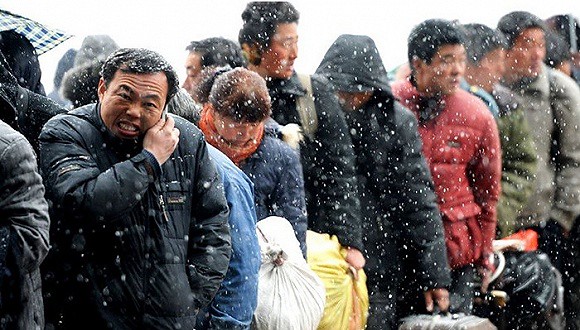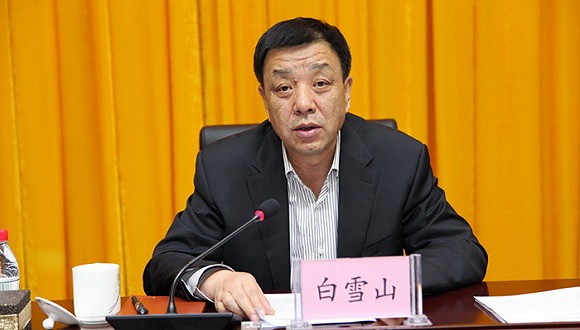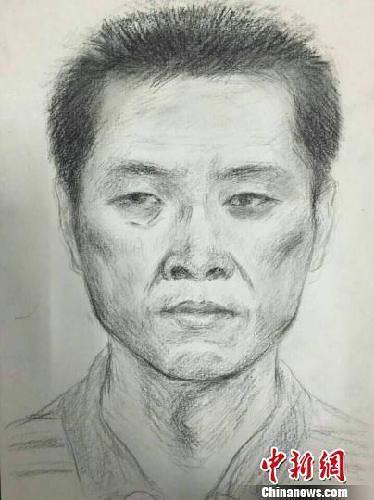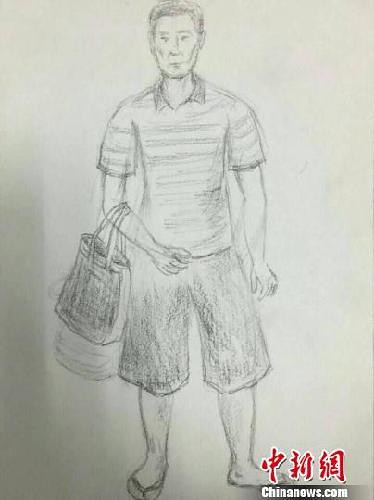Earlier this year, people in Japan snapped up the toilet lid, rice cookers craze has caused wide concern, which are reminiscent of the last century the 890, Japan television sets, washing machines and other household electrical appliances in households among the winds of fashion. "Japan made" seems to mean quality.
Saying thanks to the Japanese "craftsman spirit", they were diligent and serious. In this regard, the central China Normal University, Yan Peng has a different view of the young teachers of the Institute of modern Chinese history. Yan Peng said Japanese meticulous manner, conscientiousness image is shaped by history, early in the Meiji modernization, Japanese people are lazy, sloppy image. Modern industrialization, shaping a new image of the workers in the production, which along with Japan is known for making popular world.
Yan Peng focusing on research on economic history and the history of economic thought, the current main research interests include industrial history of modern China. The twists and turns of his monograph, the strategic industrialization: the evolution of China's machinery industry (1900-1957) at the Shanghai people's publishing house, and in this book he modern Sino-Japanese comparative study on the development of the machinery industry. "Japan made" how, how it can become a "gold-plated"? Surging News (www.thepaper.CN) has an interview with Yan Peng, asking him to talk about issues related to views.

Central China Normal University's Institute of modern history of China Yan Peng
Surging News: different historical period, the Japan Industrial manufacturing advantages differ, what are the characteristics of its development?
Yan Peng: Meiji period, Japan exported mainly to silk, tea, we know that this is in fact the traditional main export commodity in China, but China's embrace of Western technology was improved later, while Japan is China a step ahead. Meiji, Japan imported from China silk traditional production techniques, and then combined with Western technology innovation to improve, so as to gain the upper hand in the export market.
Japan's textile industry as well. After the Treaty of Shimonoseki, Japan opened a cotton mill in China, relying on China's vast consumer market, Japan enterprises earn much, it also suppresses the development of the Chinese national capital. Although tariff independent of the national Government, but run by the Japanese-owned factories in the Mainland, high duties and have little effect on it.
Japan's heavy industry such as steel, ships, too, they focus on assimilating Western technology, but its also very hard. Mitsubishi shipyards in Nagasaki, for example, its area of Jiangnan manufacturing Bureau and China is the same enterprise, also draws on Western technology, management experience. But the difference is, China Jiangnan shipyard of Jiangnan manufacturing Bureau after independence, technology is still dominated by two Englishmen, which is true even before the war. However, Japan enterprises fired the foreign technicians as possible before the 20th century, even if retained, foreign technicians or master power. Hayao Miyazaki's animation of the wind is about development of the Mitsubishi zero fighter, from which you can also see the driven side of the Japanese.

Animated movie the wind planet zero Ku, the designer of the Erlang for hero, prototype, their design planet zero experience.
After Meiji is the first world war, because Western countries engaged in war, we used to say it was the spring of China's national industry, for Japan, too. During this period China, Japan's textile industry and other industries have been developed. The 230, the Japan economy has shown duality, the rapid development of heavy industry, begins to move beyond light industry. By 1937, Japan Governments in preparation for the aggression against China, the automobile industry has had many supporting policies. At the beginning of the outbreak of war, Japan heavy industries by leaps and bounds, and also development of light industry, but relatively behind in heavy industry. Light industrial development scenario, some textile enterprises to the current political situation needs, from the production of light industry products production of heavy industrial products, such as some producers of textile machines, relative to the production of military equipment.
After World War II, Southeast Asian countries have been independent, labour was abundant and cheap, and light industry to develop, compared with Japan the traditional textile industry was slowly becoming depressed. In addition to Korea, China, Taiwan, Hong Kong and other shocks, United States in order to protect their markets for Japan's textile industry has its limits. But we also can see that postwar Japan traditional textile industry does decline, but it in turn to the development of chemical fiber, advanced fiber, Teijin, Toray Industries textile industry is capital intensive. During this period Japan's textile industry will shift from labour-intensive to capital-intensive. The Nobel literature prize announced Sweden Institute
Above is a rough description. In my opinion, Japan industry it is a complex ecosystem, heavy industry, light industry, and within different industry segments. If you want to talk about Japan industry how to rise or Japan Industrial characteristics, specific to different industries, its mode of development, development, operating rules, and successful experiences are different.
Surging News: Japan is a complex ecosystem of industry, you need concrete analysis of concrete problems, so, what do you think of academic circles in the past Japan's rise to industrial success experience of?
Yan Peng: to say that Japan why manufacturing is a success, Japan cars, home appliances, why can become the representative industrial products over a given period? I think that businesses, Government, and business groups are not neglected.
The past, talking about Japan economy or Japan how the rise of manufacturing industry, different schools of scholars often see is a dominant factor on the one hand, such as chaebol, such as Government. These two forces for Japan economy or Japan is indeed very important for manufacturing, but only to emphasize that cannot be fully explained.
Economic history of the older scholar Yan Zhongping, he wrote a book of the China cotton textile history, it was 450 in the last century, Chinese textile industry at that time was Japan's suppressed. In his book analysis, Japan firms in terms of technology, management and other advantages, one step ahead of China's development, mainly thanks to the Consortium behind the enterprise support. Because capital can support larger sales network, and contributed to Japan's textile industry development. By contrast, capital it is weak in a number of national enterprises, Chinese scholars have seen this.

China cotton textile history of Yan Zhongping Chen
Postwar Japan reform of democratization, the chaebol power is destroyed, but the links between them. Japan's industrial rise has indeed played an important role. But on the other hand, we would also like to see Japan excellent companies, such as Toyota, Honda, they do not really traditional Zaibatsu. Even when Toyota first step into the automotive industry, he said, such as cars, other enterprises, including rich tycoons are not willing to take the risk, we Toyota is willing to take the risk. It is a fact, we can see that Toyota's success does not depend on the traditional Zaibatsu, while in the process of development, Toyota also had close relations with chaebol.
However, Toyota has not been formed prior to the climate, how it can sprout, and survive in bad economic environment? This is talked about in the twenties or thirties of the 20th century, Japan played a role in the Government.
At that time, the Japan Government to support the development of domestic automobile, auto industry subsidies. Problem is, when the Japan Automobile in spite of government subsidies, it still on the market than the United States automotive high and technology still lag behind, then, consumers don't want to buy domestic cars, and Japan also no companies willing to produce the car. Even companies such as Toyota, whether it is itself interested in machinery manufacturing, or is it industry serve the nationalist sentiment, if not win the market, unable to make a profit, how can it survive? Japan car just at the beginning stages, Japan Government and military really gave a lot of power to support this cause, so if you take into account areas such as automotive, military, Japan manufacturing can rise, the role of Government also cannot be ignored.

Kiichiro Toyoda, Toyota's founder in 1929, went to Europe, car production. 1937 official establishment of Toyota cars.
Surging News: Western companies face repression, Japan Government to support domestic enterprises?
Yan Peng: Japan has proposed a theory called the "flying geese" theory ", said advanced countries in the world, in countries and less advanced countries, Japan is in the country, compared to Europe and not, but stronger than China, Southeast Asia. So, Japan how to into the country into the ranks of advanced countries? Japan to treat the difference between the two markets and to Europe and the export of silk and other products of light industry, imports of heavy chemical industry products, such as lathe, while exports of industrial products to poor countries, imports of raw materials. Japan's industrial products in a certain period cannot be won the European and American market, it sells to the poor countries, the colonial. Such as the puppet State of Manchukuo to Japan, this is an exclusive market at the time.
Japan's machinery products, such as locomotives, locomotive is, at first, very dependent from the United States imported technology, if equity sales its products but the United States, but in Manchuria, China, Taiwan, the Korean peninsula, Japan colony, this is Japan's market. Machines must be in continuous production in technological upgrading, to maintain the manufacturing market is needed, the Japan Government by colonial expansion, establishing "greater East Asia co-prosperity sphere" Digest of its industrial products, pick colonies practiced hand of the market, from our standpoint, this is critical, but to Japan manufacturing for the development, it is indeed very important.

On November 1, 1934, the new Beijing South Manchuria Railway Corporation in Manchukuo (now Changchun) to Dalian to begin the world's first streamlined high-speed trains "Super Express, Asia minor," a luxury train.
Postwar Japan Society is also controversial, some say bad cars just don't build cars, shirts, socks, toys, which has many advantages for development of light industry. Japan financial services sector is in favour of this view, the industry did not agree with, but also support the idea of manufacturing industry development. Furthermore, from the Meiji, Japan's economic rise, Japan we do have protection for domestic industry policy and limit foreign investment, for foreign investment are very alert and exclusion.
Of course, not saying that there is Government support can be successful, like Japan's semiconductor hardware manufacturers heavily, but in the development of new areas of information technology, despite Japan Government wants to cultivate, but less success than its traditional manufacturing industries.
Surging News: automotive industry is Japan a typical representative of the industry, Toyota as an example, Japan Auto markets around the world to set up their independent status?
Yan Peng: cars are Japan sells one of the most important products of the world when it comes to Japan why able to occupy the market, what is characteristic, Toyota can say is Japan a typical industrial.
20th century industrial production patterns, management has said, a production model is called Fordism refers to mass production, based on a United States Ford and another model called the Toyota production system, also known as lean manufacturing, Japan Automobile foothold after in the 1970 of the 20th century, booming, this model from Toyota's production experience.
Car is beat by hand at the beginning of the birth, such as the United Kingdom's automobile industry, had to admit that the craftsman technical genius, but in this production, is not exactly the same car. Ford's core business is the standardized parts are interchangeable, with Assembly line mass production, once economies of scale, can sell cheap price. This car market, the ease of car repair. Ford was born under the mode of production plant, its drawback is the line segment of each process, boring, monotonous, and mass production require large investments, convert models is not easy, because car manufacturers when it comes to rolling out new models, you need to replace a whole set of production line, cost is very high.

Ford Motor production line
With the popularity of cars, consumers want to model more diversification, individuality, when Ford made it hard to adapt, and highlights the advantages of lean manufacturing. Informally, lean manufacturing is a combination of hand-made and Ford, Ford emphasized the role of the machine, and emphasized the role of lean manufacturing.
To note is that is not to say that Japan all the car manufacturers have adopted lean manufacturing a production model, Toyota is a typical representative.
Surging News: Toyota has been to the Ford learning why ultimately chose a different mode of production?
Yan Peng: Toyota after the war to the United States Ford factory learning experience, but they did not adopt the Ford system, but to create the Toyota system, there are two reasons.
Toyota, on the one hand feel of Ford production waste. Because it was once an entire automobile production, quality inspection, which link error once, it scrapped the whole car. Toyota will give full play to the initiative and were in some problems found in the operation can be stopped, in the production Assembly process, problems can be corrected.
The other hand, Japan were unable to carry out the Ford system. Because mass production requires large investment, output depends on the market, Toyota and have no money to engage in large-scale production of equipment and production is pitifully small, just after the end of World War II Japan consumer market, Toyota's sales are small.
Surging News: Toyota how to survive in the consumer market?
Yan Peng: Toyota out of production scrap rates low, short and flexible, and easier to roll out new models, in addition to Toyota's more importance to users. United States automobile manufacturers because the market is large and not worried about sales, user value is not high. Japan Automobile manufacturers need more repeat customers, usually emotional contact, between the user and collect views from doing very well. In addition, Toyota and parts manufacturers have established a United States Enterprise closer relationships, some scholars call "strategic outsourcing" and a little "prosperity and harmed" feeling. Such products from suppliers, then put it together as a whole, the product will have some advantages. But Toyota's start at the beginning, this advantage is not reflected.
About 60, Toyota began selling to the United States market, United States dealers called "activities of the coffin", you can imagine at Toyota in areas such as quality is not good, there was a time, even Toyota is about to exit the United States market. But eventually survived, which is based on Japan's experience in the domestic market, to improve the cars constantly.
The 1973 oil crisis, this is Japan cars in the United States market as an opportunity. United States automobile industry, it is an oil-rich, so didn't take into account fuel consumption problems, United States Auto are large-volume, large displacement. Limited oil exports in the Middle East, the United States automobile industry was an accident. Given the circumstances, Japan cars smaller, fuel-saving advantages stand out. In 1979, after the second oil crisis, Japan car advantage is more obvious. Since then, Japan cars in the United States occupy the place in the market.

United States at Toyota Center
Into the 1980 's, Japan manufacturing momentum of United States began to feel nervous. Harvard Professor Ezra Vogel wrote a book, the Japan of the first, in the book, he regrets Japan's small size, industrial raw material resources are limited and population density and the natural disasters, a country can, in just more than 100 years, achieved such results, so he believes Japan will surpass United States as a world power. Such statements made throughout Europe and the world panic. However, Japan after the crushing of the bubble economy, began to decline.


































